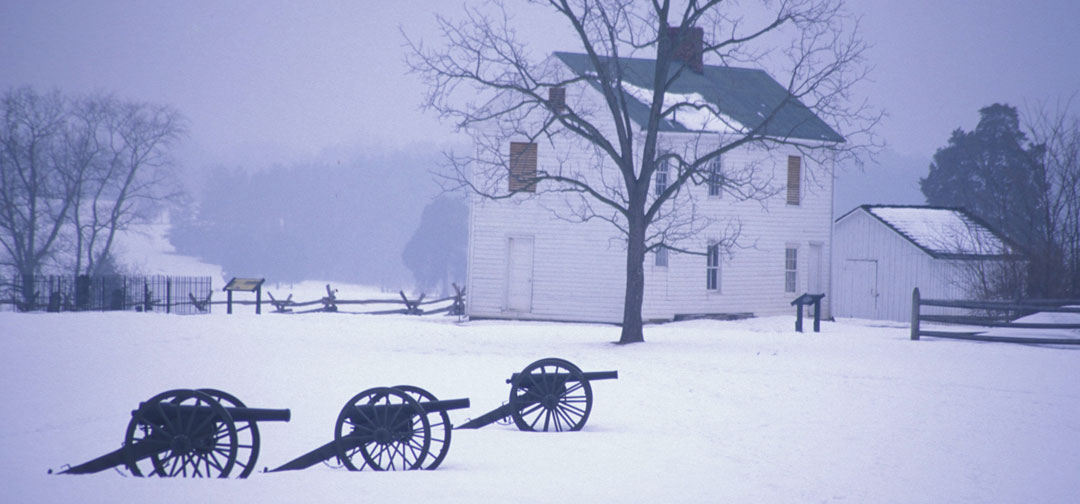The Civil War was largely fought in the 100-mile-long corridor between the capital cities of Washington, D.C. and Richmond, Virginia. The fighting was so intense and prolonged that the armies could not even identify or properly bury their dead.
Over three million Americans (two-thirds Union, one-third Confederate) fought in the war on both sides; the total number of war-related military deaths is estimated at between 620,000 and 750,000*. A third of these died on the battlefield; the remainder perished of disease or other causes.
MAJOR ENGAGEMENTS
| BATTLE | DATES(S) | COMBATANTS | CASUALTIES |
| First Bull Run (Manassas) | 7/21/1861 | 60,680 | 4,690 |
| Shiloh (Pittsburg Landing) | 4/6/1862-4/7/1862 | 110,053 | 23,746** |
| Seven Days *** | 6/25/1862-7/1/1862 | 186,651 | 36,400 |
| Second Bull Run (Manassas) | 8/28/1862-8/30/1862 | 110,527 | 22,180 |
| Antietam (Sharpsburg) | 9/17/1862 | 115,316 | 23,100 |
| Fredericksburg (Marye’s Heights) | 12/11/1862-12/15/1862 | 172,504 | 17,929 |
| Chancellorsville | 4/30/1863-5/6/1863 | 154,734 | 24,000 |
| Gettysburg | 7/1/1863-7/3/1863 | 158,300 | 51,000 |
| Chickamauga | 9/18/1863-9/20/1863 | 124,458 | 34,624 |
| Wilderness | 5/5/1864-5/7/1864 | 162,920 | 29,800 |
| Spotsylvania | 5/8/1864-5/21/1864 | 152,000 | 30,000 |
| Cold Harbor | 6/3/1864 | 170,000 | 15,500 |
| Sherman’s March to the Sea (Savannah Campaign) | 11/15/1864-12/21/1864 | 75,000 | 11,700 |
| Appomattox Campaign | 4/9/1865 | 163,000 | 16,780 |
*See J. David Hacker's 9/30/2011 commentary on "Recounting the Dead" at http://opinionator.blogs.nytimes.com/2011/09/20/recounting-the-dead/.
**More than in all US wars to that date combined
***Oak Grove, Beaver Dam Creek, Gaines’ Mill, Savage Station, Glendale, White Oak Swamp and Malvern Hill
SHIPS OF NOTE
J.M. ChapmanThis Confederate privateer was captured in San Francisco harbor on March 15, 1863. Although the Declaration of Paris in 1856 had abolished privateering for signatory countries (the United Kingdom, Austria-Hungary, France, Prussia, Russia, Sardinia and the Ottoman Empire), the United States had failed to join the compact. The Union tried to to join after the Civil War commenced, but was not permitted to because of the signatories' fear that this would be viewed as favoritism by the existing pact members. Confederate privateers were active during the war, expecially near Charleston, Savannah, and New Orleans, and off the North Carolina coast.
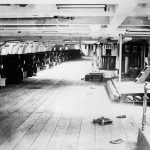 HMS Sutlej
HMS SutlejThis British Royal-Navy frigate was fired upon by Fort Alcatraz (and, by some accounts, Fort Point as well) as it entered San Francisco harbor on October 1, 1863. The ship's flag had been obscured and the American defenses, on the alert for a Confederate invasion, had fired on her in error. Stiff diplomatic exchanges ensued, but no further military action was taken.
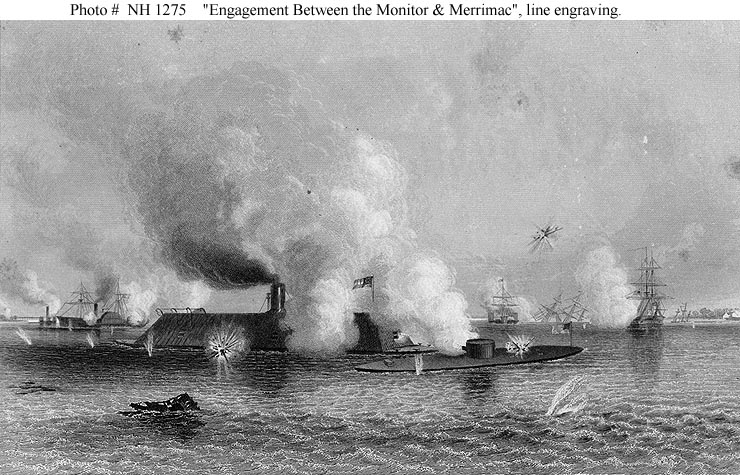 USS Monitor
USS MonitorCSS Virginia (formerly the USS Merrimack)
On March 9, 1862, the CSS Virginia (formerly the USS Merrimack) engaged the USS Monitor. Both ships were of a new class, known as 'ironclads'-- armored ships, in contrast to ordinary wooden vessels. The battle ended in a draw-- neither ship could inflict significant damage on the other because of the armor plating both carried. In a single day, the un-armored navies of the world were rendered obsolete.
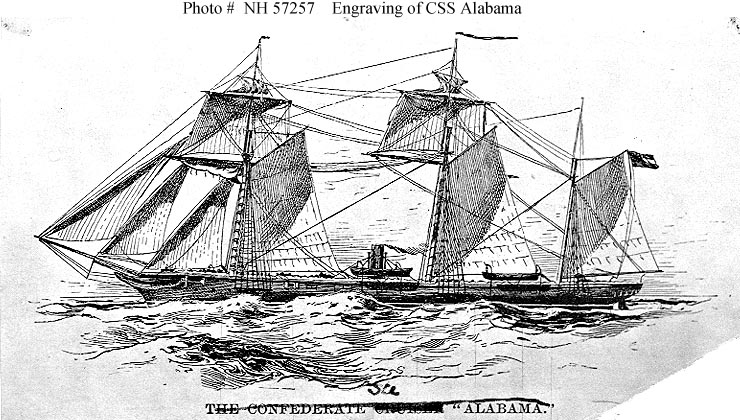 CSS Alabama
CSS AlabamaThe CSS Alabama was the best-known of the Confederate raiders. It was commissioned on August 24,1862 and spent the next 22 months laying a path of destruction from the North Atlantic to Texas, from South Africa to the East Indies. It claimed a total of 60 prizes before being sunk on June 19, 1864 by the USS Kearsarge near Cherbourg, France.
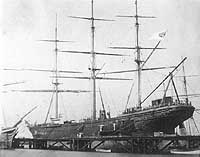 CSS Shenandoah
CSS ShenandoahThe CSS Shenandoah was commissioned as a Confederate warship on October 19, 1864. She sailed the Bering Sea and captured over two dozen ships, destroying most of them. She then turned south toward San Francisco, which she believed would be weakly defended. Unknown to her captain, however, the Civil War had already ended some two months prior. Fortunately for the City by the Bay, an English sailing ship carried the news of the war's end to the Shenandoah, who sailed to England and was decommissioned there.
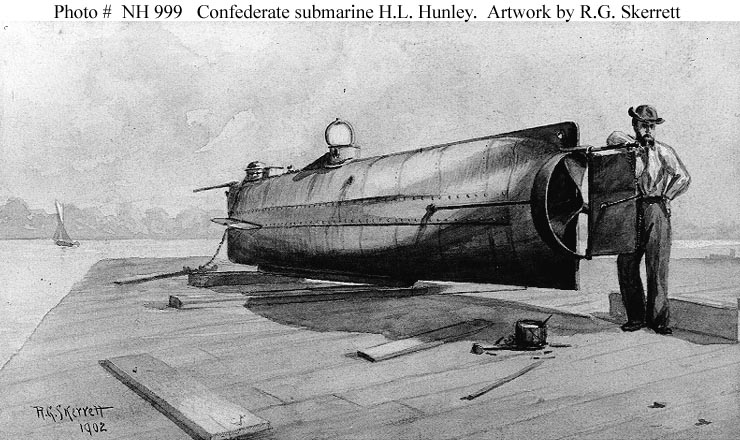 H.L.Hunley
H.L.HunleyThe H.L. Hunley was a prototype submarine built for the Confederate Navy in 1864 by its inventor, Horance Lawson Hunley. It sank shortly after launch in August 1863, was salvaged and went on to field trials where it failed and again sank. Raised a second time, it was assigned to surface duty near Charleston, N.C. and sank the USS Housatonic, the first successful attack on a warship by a submarine.
FURTHER READING
Catton, Bruce.The Civil War. Random House Value Publishing, 1988.
Esposito, Brigadier General Vincent J. The Civil War (The West Point Atlas of War). United States Military Academy, 1995.
Foote, Shelby.The Civil War: A Narrative (3 volumes). 1974.
McPherson, James M.Atlas of the Civil War. Courage Books, 2005.
McPherson, James M.Battle Cry of Freedom. Oxford University Press, 2003.
Wiley, Bell I. The Life of Johnny Reb; The Life of Billy Yank. Louisiana State University Press, 1994.
(Posted January 2013; Revised March 2013)
